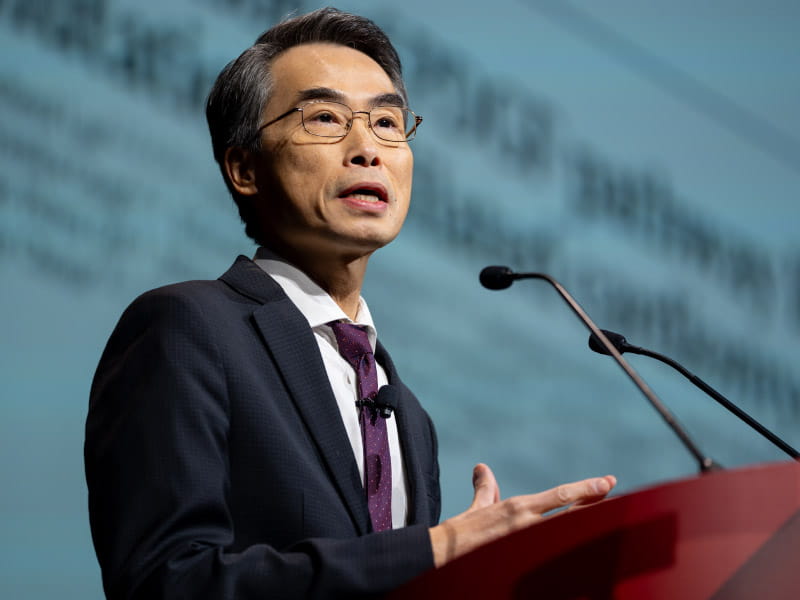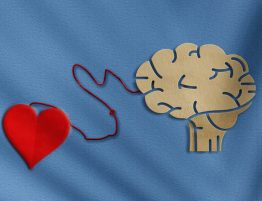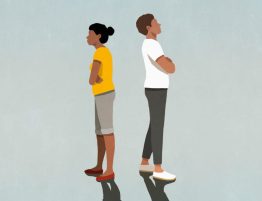
PHILADELPHIA – As a teenager in California, Dr. Joseph Wu not only worked on his family’s pear and apple farm, he was the manager. So he paid close attention to everything, such as the way migrant workers came together as a team that was greater than the sum of its parts.
The family sold the farm once Wu went off to Yale University’s medical school. And as he began working in research labs and clinical settings, Wu again witnessed the benefits of collaboration.
Now he’s director of the Stanford Cardiovascular Institute and volunteer president of the American Heart Association. Wu is a pioneer in cutting-edge research and he’s studying the effects of microgravity in space on the human heart. Yet when he detailed all his intricate work during his Presidential Address at the AHA’s Scientific Sessions conference Sunday, Wu kept returning to what he called “a simple message”: Teamwork matters.
“We are all better off when we are part of a team, especially when we all work together to do the right thing for the right reasons,” he said. “Because cardiovascular disease does not care about any differences that may divide us. Only by uniting our efforts will we make the biggest advances in preventing, and treating, heart diseases.”
Wu’s talk mostly centered on his favorite research topic: stem cells.
He explained that embryonic stem cells have ethical concerns and adult stem cells are, by nature, old. So, since 2007, his work has relied on a third kind – a lab-generated version called induced pluripotent stem cells, or iPS cells.
“They are as essential to my lab as the pear and apple trees were on my dad’s farm,” he said.
Wu noted that what makes iPS cells special is that they “offer the best aspects of both embryonic and adult stem cells with none of the ethical concerns nor senescence issues.” Others agree; in 2012, the scientists who discovered iPS cells won a Nobel Prize.
iPS cells are made by combining four reprogramming factors with blood cells or skin cells. The process resets those cells to their embryonic stage. At that point, they can be turned into any cell type. Wu’s lab specializes in turning them into heart cells.
Wu also uses iPS cells to create what he calls a “clinical trial in a dish.” Rather than using, say, 1,000 humans to test a new medicine, the drug could be tested – faster and easier – on 1,000 iPS cells. He calls this process “the holy grail of precision cardiovascular medicine.”
Since Wu began working with iPS cells, another Nobel Prize-winning breakthrough arrived: the gene-editing technology known as CRISPR. Wu has found a way to put them together. He explained how by telling the story of a family in which eight people, spread across three generations, died from sudden cardiac death. A member of the third generation came to Wu seeking to find and understand the root cause of all these tragedies.
Using iPS cells to create heart cells known as cardiomyocytes, Wu indeed found the culprit of the sudden cardiac death – a mutation involving the LMNA gene. Using CRISPR, they were able to correct it.
Work could’ve ended there. However, along the way, Wu’s team discovered that many of those patients also developed early-onset high blood pressure. Again, they sought to find and understand the problem.
This time, they used iPS cells to create vascular endothelial cells. They traced the source of the problem to the gene KLF2. Using a “clinical trial in a dish,” they found a medicine that, six months later, sent blood pressure readings headed in the right direction.
“I hope that in the upcoming decades, work like this will be a common part of our toolboxes,” Wu said.
To speed that progress, the Stanford Cardiovascular Institute is sharing its biobank of iPS cells, having sent more than 4,000 vials to over 500 investigators around the world.
“The more we help one another, the more we help ourselves, our current patients, and our future generations,” Wu said.
Another area of emphasis in Wu’s lab involves space travel.
The subject fascinated him as a child in Taiwan. About a decade ago, he began thinking about the day when flying to space will be as routine as flying anywhere on Earth. That led to thoughts about how the human heart would respond to zooming through zero gravity.
In 2016, his lab sent 2D, human iPS cell-derived cardiomyocytes to space. In 2020, they sent 3D, human iPS cell-derived engineered heart tissues to space.
“In both cases, we found that microgravity in space can actually cause abnormal cardiac changes,” he said.
Earlier this year, Wu was in Florida to watch the launch of a SpaceX flight that sent 3,800 human iPS cell-derived cardiac organoids to space. Half were treated with drugs, half weren’t. Results are being analyzed, with results expected soon.
“Our goal is to come up with drugs that can mitigate the adverse cardiovascular effects of microgravity,” he said.
As part of his discussion of this subject, Wu turned to two experts: NASA astronaut Jasmin Moghbeli and Satoshi Furukawa of Japan’s space agency. Both are currently on the International Space Station.
In a video created from the ISS for Wu’s address, Moghbeli said: “I encourage those in attendance to think about taking your research beyond Earth’s horizon. Through space-based research, we can hopefully find ways to treat many of the mitigating ailments that humans develop on our planet. Thank you for all that you do to treat patients on Earth.”
With that, she and Furukawa waved, then floated up and off the screen, together.
Find more news from Scientific Sessions.







